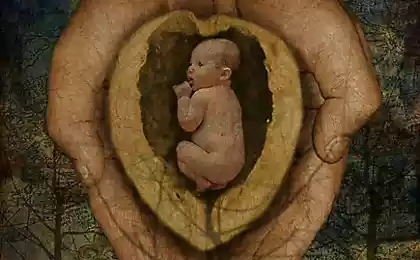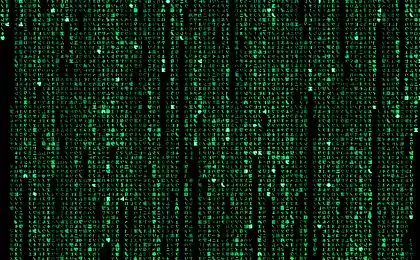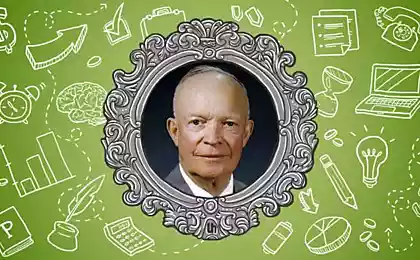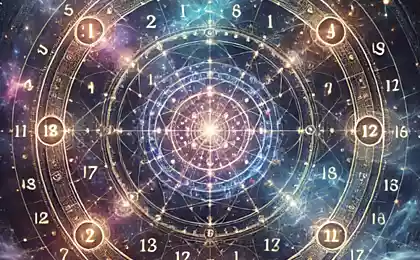629
Stanislav Grof: 4 perinatal matrices
Now psychologists around the world are concerned about the problem of"fathers and children". Both parents and children, they do not understand each other. But it doesn't happen in all families.
Our future depends on our upbringing. But it is also necessary to understand that the child is not an animal that needs training. The child is the same person as you.
So what is influencing the mental health of the child? First and foremost is the relationship to your child. Either you scold him for every little thing, not even explaining why you can't do that, either you accept the child for who he is, and try to peacefully explain to the child what, why and how.

The formation of our psyche is divided into several stages:
The first matrix– the presence of the fetus in the uterus until birth.
When the child is welcome, when the mother is not experiencing the mental and biological stress, people at this ontogenetic period gains experience a blissful happy state.
But if the child is unwanted, the mother is under stress, hurts, conflicts with the husband or parents wanted to have an abortion, etc., then such a person, if he can be born, no experience of a peaceful happy existence. The world does not accept it initially in utero and in response, he accepts the world, do not trust this world.
The second matrix – the period of the stage of birth when contractions are coming. This is the period of the first difficulties in life each of us. This is the beginning of the first life crisis at the end of which the fetus-like creature living in the aquatic environment, receiving nourishment and oxygen through the umbilical cord, not breathing as light dies and is born.
This is the period when a failed course which laid the foundations of depression, unexplained anxiety and depression, often accompanies deviant behavior. This deviation can be explained by the unconscious desire to return to more comfortable, the oceanic state of the first matrix. But return can not be. There is only one way to be born. Return, one way or another leads to death.
The third matrix starts with the beginning of fetal movement through the birth canal. The most critical moment of the life of the fetus, in which the biological separation from the mother. It was during this period laid the foundations for most behavioral, psychological and social problems. From the slightest nuances of a third matrix depend in the future, especially personal history.
Stanislav Grof suggests that the drug epidemic originates in a third matrix. Namely, the practice of medicinal stimulation of this stage of labor, analgesia, or stopped their natural flow. It turns out that people in this period, the first difficulties, gaining experience chemical to get rid of them. And it is a powerful imprint, imposes its imprint on the entire life.
At the stage of psychological disconnection from their parent families, transition from childhood into the adult world, taking responsibility for your life, a single drug to make deep imprinting mechanisms and addicted.
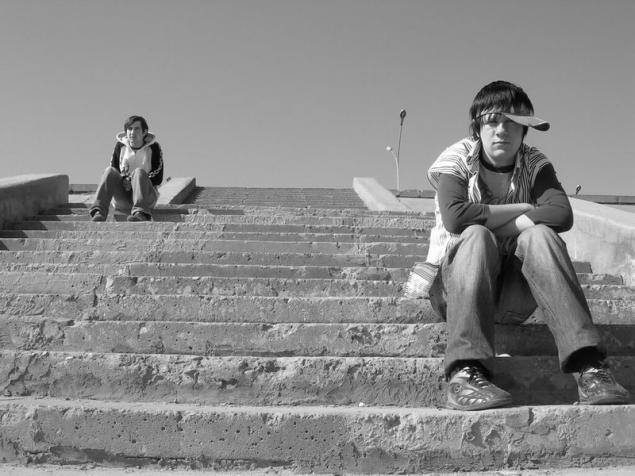
The fourth matrix – phase cutting of the umbilical cord. Here shaped our attitude towards the external world will not ampelnoe, and quite human. And it may be a situation when a person is born, but the fact of his birth and was not accepted.
One of the characteristics of adolescents with deviant behavior is a total distrust of adults, parents, yourself, and anesthesia in this case may be an illusion of trust. The feeling of hopelessness this situation is akin to the feeling of hopelessness of the second perinatal matrix, because a person can not refuse delivery.
Of great importance in child psychiatry, respectively, and psychotherapy, has residual organic inferiority of the Central nervous system of the child. It is usually lead perinatal, Natal, postnatal harm (asphyxiation, chronic poisoning, RH-conflict metabolic disorders, severe somatic or infectious diseases the first years of life) and a number of other factors that a period of lower functional dynamic capabilities of the Central nervous system. And in varying degrees, delay the physiological process of maturation that in turn may lead to delayed development of the most complex and sophisticated physiological functions: speech, social skills and the like, turning them into the place of greatest vulnerability. On this basis are often developed specific to childhood neurotic reactions, neuroses monosymptomatic: stuttering, enuresis, etc.
In the process of psychotherapeutic work are constantly faced with a huge compensatory opportunities of children and adolescent brain.
Also interesting: Orgasmic birth — the biggest SECRET!
4 things you need to understand the parents of the teenager
With age, the main manifestations of deficiency of the Central nervous system are smoothed, aligned motor skills, improved functionality of the nervous system. It is confirmed by an electrophysiological study of age peculiarities of the brain.published
P. S. And remember, just changing your mind — together we change the world! ©
Source: psychojournal.ru/article/795-psihobiologicheskie-korni-deviantnogo-povedeniya-podrostkov.html
Our future depends on our upbringing. But it is also necessary to understand that the child is not an animal that needs training. The child is the same person as you.
So what is influencing the mental health of the child? First and foremost is the relationship to your child. Either you scold him for every little thing, not even explaining why you can't do that, either you accept the child for who he is, and try to peacefully explain to the child what, why and how.

The formation of our psyche is divided into several stages:
- the period of intrauterine development of the fetus,
- infancy,
- the crisis of three years,
- the crisis of seven years,
- the transition to adulthood.
The first matrix– the presence of the fetus in the uterus until birth.
When the child is welcome, when the mother is not experiencing the mental and biological stress, people at this ontogenetic period gains experience a blissful happy state.
But if the child is unwanted, the mother is under stress, hurts, conflicts with the husband or parents wanted to have an abortion, etc., then such a person, if he can be born, no experience of a peaceful happy existence. The world does not accept it initially in utero and in response, he accepts the world, do not trust this world.
The second matrix – the period of the stage of birth when contractions are coming. This is the period of the first difficulties in life each of us. This is the beginning of the first life crisis at the end of which the fetus-like creature living in the aquatic environment, receiving nourishment and oxygen through the umbilical cord, not breathing as light dies and is born.
This is the period when a failed course which laid the foundations of depression, unexplained anxiety and depression, often accompanies deviant behavior. This deviation can be explained by the unconscious desire to return to more comfortable, the oceanic state of the first matrix. But return can not be. There is only one way to be born. Return, one way or another leads to death.
The third matrix starts with the beginning of fetal movement through the birth canal. The most critical moment of the life of the fetus, in which the biological separation from the mother. It was during this period laid the foundations for most behavioral, psychological and social problems. From the slightest nuances of a third matrix depend in the future, especially personal history.
Stanislav Grof suggests that the drug epidemic originates in a third matrix. Namely, the practice of medicinal stimulation of this stage of labor, analgesia, or stopped their natural flow. It turns out that people in this period, the first difficulties, gaining experience chemical to get rid of them. And it is a powerful imprint, imposes its imprint on the entire life.
At the stage of psychological disconnection from their parent families, transition from childhood into the adult world, taking responsibility for your life, a single drug to make deep imprinting mechanisms and addicted.

The fourth matrix – phase cutting of the umbilical cord. Here shaped our attitude towards the external world will not ampelnoe, and quite human. And it may be a situation when a person is born, but the fact of his birth and was not accepted.
One of the characteristics of adolescents with deviant behavior is a total distrust of adults, parents, yourself, and anesthesia in this case may be an illusion of trust. The feeling of hopelessness this situation is akin to the feeling of hopelessness of the second perinatal matrix, because a person can not refuse delivery.
Of great importance in child psychiatry, respectively, and psychotherapy, has residual organic inferiority of the Central nervous system of the child. It is usually lead perinatal, Natal, postnatal harm (asphyxiation, chronic poisoning, RH-conflict metabolic disorders, severe somatic or infectious diseases the first years of life) and a number of other factors that a period of lower functional dynamic capabilities of the Central nervous system. And in varying degrees, delay the physiological process of maturation that in turn may lead to delayed development of the most complex and sophisticated physiological functions: speech, social skills and the like, turning them into the place of greatest vulnerability. On this basis are often developed specific to childhood neurotic reactions, neuroses monosymptomatic: stuttering, enuresis, etc.
In the process of psychotherapeutic work are constantly faced with a huge compensatory opportunities of children and adolescent brain.
Also interesting: Orgasmic birth — the biggest SECRET!
4 things you need to understand the parents of the teenager
With age, the main manifestations of deficiency of the Central nervous system are smoothed, aligned motor skills, improved functionality of the nervous system. It is confirmed by an electrophysiological study of age peculiarities of the brain.published
P. S. And remember, just changing your mind — together we change the world! ©
Source: psychojournal.ru/article/795-psihobiologicheskie-korni-deviantnogo-povedeniya-podrostkov.html

